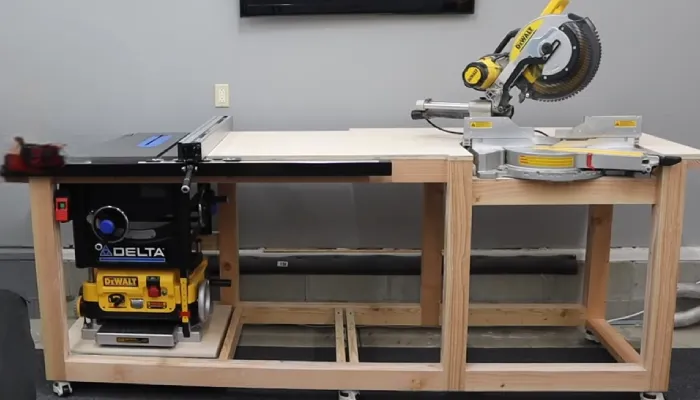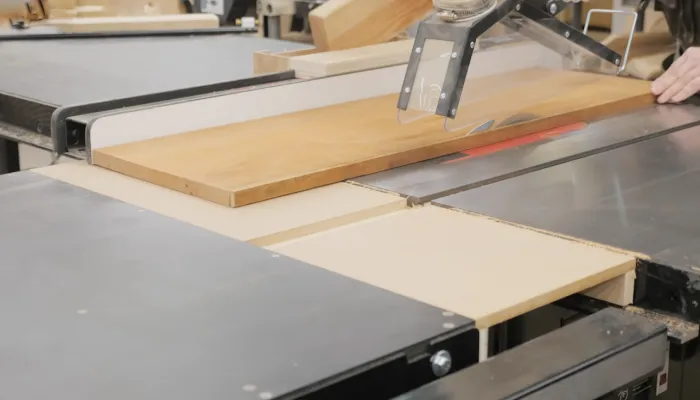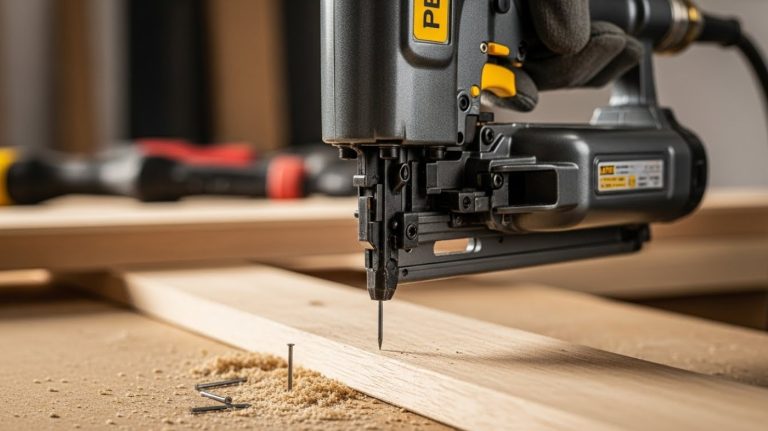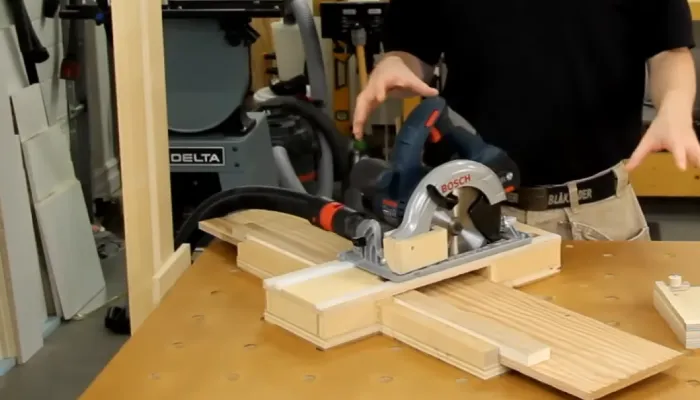How to Store Table Saws in Garage: 5 Ideas
Storage of your table saw in the garage is convenient and crucial to ensuring its longevity and optimal performance. As a woodworking enthusiast, I appreciate properly storing carpentry table saws in the garage.
One option is to build a tabletop for the table saw, providing a dedicated space for it to sit when not in use. Another option is implementing a pulley system for ceiling storage, allowing you to easily raise and lower the table saw as needed.
Here, I’ll share practical ideas on how to keep your table saw table free from rust, whether lubrication should be done before storing, and other expert insights to protect your valuable equipment. Let’s dive in and safeguard your saws for years to come.
How to Store Table Saws in Garage: 5 Recommendations
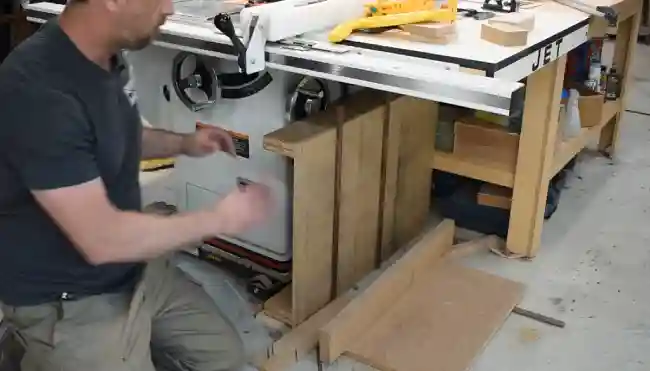
According to my findings, several practical options exist when storing carpentry table saws in the garage. Here I listed the top 5 recommendations:
- Building a tabletop for the table saw
- Implementing a pulley system for ceiling storage
- Integrating the table saw into the workbench
- Creating a custom storage solution with a vertical design
- Exploring portable and foldable options (Optional)
No 01: Building a Table Top for the Table Saw
I recommend selecting a sturdy material such as plywood or another durable option to build a tabletop for your table saw. This will ensure that the table top provides a flat and stable surface for your saw to rest on.
Measure the dimensions of your table saw accurately to create a tabletop that fits perfectly. Use a circular or table saw to cut the plywood to the desired size.
Next, attach the tabletop securely to a robust frame using screws or bolts. Ensure the tabletop height is ergonomic for your work, allowing you to operate the saw comfortably.
No 02: Implementing a Pulley System for Ceiling Storage
To ensure the safety and effectiveness of the pulley system, you have to use pulleys and ropes rated for the weight of your saw. You must also create a secure harness or cradle to hold the saw as it’s lifted. This optimizes vertical space in your garage and keeps the floor free for other activities.
Before using the pulley system, I strongly suggest double-checking its stability and ensuring it’s properly anchored to the ceiling joists for maximum safety.
No 03: Integrating the Table Saw into the Workbench
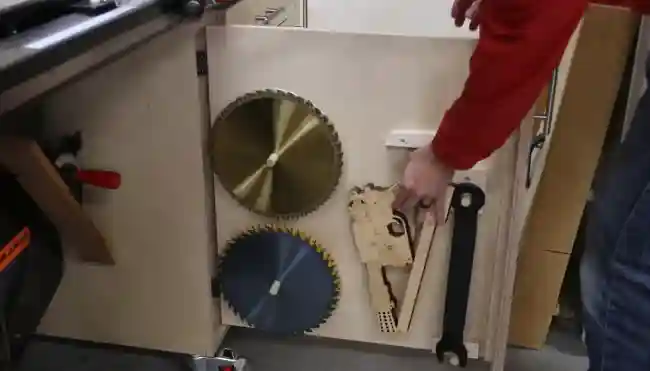
I recommend creating a dedicated space within the workbench to integrate the table saw into the workbench and store it in the garage. This will ensure that the table saw is securely held in place and easily accessible for use.
Start by measuring the dimensions of the table saw to determine the size of the space needed. Cut out a section of the workbench’s top surface that matches the measurements of the table saw. Reinforce the edges of the opening with sturdy materials to provide support.
Attach clamps or brackets to secure the table saw in place during operation. Additionally, consider adding a dust collection system to minimize sawdust buildup.
No 04: Creating a Custom Storage Solution with Vertical Design
The other effective method I found for storing carpentry table saws in the garage was to create a custom vertical storage solution. This design maximizes the use of vertical space and ensures efficient storage of the table saw and its accessories.
To achieve this, incorporate a drawer for frequently used accessories, allowing for easy access and organization. Below the drawer, create a storage area with a door that reveals slide-out pegboard panels. These panels provide additional storage space and can be customized to hold various tools and equipment.
Additionally, consider including a case for sleds that can be conveniently stowed away inside the storage unit when not in use. I believe this vertical storage solution provides a compact and well-organized way to store your carpentry table saws in the garage.
No 05: Exploring Portable and Foldable Options (Optional)
I recommend exploring portable and foldable options to maximize space and ensure easy storage for your carpentry table saws in the garage.
Look for table saws with a compact design that can be easily folded and stored when not in use. The folding mechanism should be sturdy and reliable, ensuring that it doesn’t compromise the performance or stability of the saw.
Portable table saws are typically lighter, making them easier to move around and store. These saws often have built-in handles or wheels, allowing for effortless transportation. Some foldable table saws also offer adjustable stands or legs, providing extra stability and versatility.
How do I keep my table saw’s table from rusting?
I advise applying high quality wax for table saw, a thin coat of rust-preventive oil or silicone spray to your table saw when storing it in the garage for long periods. To avoid injury from the blade, apply the lubricant carefully.
This simple step creates a protective barrier that inhibits the formation of rust by preventing moisture from reaching the metal surface.
Cover the entire table surface evenly when applying the rust-preventive oil or silicone spray. You can use a clean cloth or a brush to ensure thorough coverage.
Should I lubricate my table saw before storing it?

To ensure optimal performance and prevent rust, I recommend lubricating your table saw before storing it in the garage. Lubrication helps reduce table saw loudness, keep the moving parts of the saw moving smoothly, and prevent corrosion.
Before applying any lubricant, it’s important to clean the surfaces thoroughly to remove any dirt or debris. Once cleaned, apply a light coat of lubricant to the trunnions, gears, and other moving components.
After applying the lubricant, operate the saw for a few minutes to ensure that the lubricant is distributed evenly. By taking these simple steps, you can protect your table saw and ensure it’s ready for use when needed.
Properly Store Your Carpentry Table Saw With a Storage Unit
Having read my article, you should understand that regular maintenance and thoughtful storage is key to keeping your carpentry table saw in great shape.
Whether you opt for a custom-built tabletop, a space-saving pulley system, workbench integration, or a vertical storage design, each method contributes to the longevity of your equipment.
Don’t forget the importance of preventive measures such as applying rust-preventive coatings and proper lubrication before storing your table saw.
With these considerations in mind, your carpentry table saw will remain a reliable and precise workshop tool, capable of bringing your creative visions to life.

